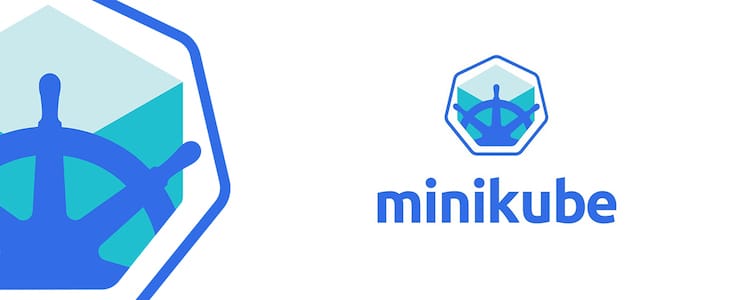How To Install Minikube on openSUSE

Minikube is a powerful tool that allows developers to create and manage a local Kubernetes cluster. It is particularly useful for testing and developing applications in a Kubernetes environment without the need for a full-fledged cloud setup. This article will guide you through the process of installing Minikube on openSUSE, covering prerequisites, installation methods, and troubleshooting tips, ensuring you have everything you need to get started with Kubernetes.
Understanding Minikube
What is Minikube?
Minikube is an open-source tool that creates a local Kubernetes cluster on your machine. It is designed to help developers learn and experiment with Kubernetes by providing a simple way to run Kubernetes locally. With Minikube, you can test your applications in an environment that closely resembles production, allowing for smoother transitions to cloud-based deployments.
Why Use Minikube on openSUSE?
openSUSE is a versatile Linux distribution known for its stability and ease of use. By running Minikube on openSUSE, developers can leverage the robust package management system and community support that comes with it. Additionally, openSUSE’s compatibility with various software tools makes it an excellent choice for Kubernetes development.
Prerequisites for Installing Minikube
System Requirements
Before installing Minikube, ensure your system meets the following minimum hardware specifications:
- CPU: At least 2 cores
- RAM: Minimum of 4 GB (8 GB recommended)
- Disk Space: At least 20 GB of free space
Software Requirements
You will need several software components installed on your system to run Minikube effectively:
- Docker: A container runtime that Minikube uses to run Kubernetes components.
- kubectl: The command-line tool for interacting with Kubernetes clusters.
- Virtualization Support: Ensure that your CPU supports virtualization (VT-x or AMD-V) and that it is enabled in the BIOS.
Installing Required Tools
The first step is to install Docker and kubectl on your openSUSE system. Follow these steps:
Installing Docker
# Update the package repository
sudo zypper refresh
# Install Docker
sudo zypper install docker
# Start Docker service
sudo systemctl start docker
# Enable Docker to start at boot
sudo systemctl enable docker
Installing kubectl
# Download the latest kubectl binary
curl -LO "https://storage.googleapis.com/kubernetes-release/release/$(curl -s https://storage.googleapis.com/kubernetes-release/release/stable.txt)/bin/linux/amd64/kubectl"
# Make the binary executable
chmod +x ./kubectl
# Move the binary to your PATH
sudo mv ./kubectl /usr/local/bin/kubectl
# Verify the installation
kubectl version --client
Installing Minikube on openSUSE
Method 1: Using zypper Package Manager
The easiest way to install Minikube on openSUSE is by using the zypper package manager. Follow these steps:
# Add the Minikube repository
sudo zypper addrepo https://download.opensuse.org/repositories/Cloud:/Minikube/openSUSE_Leap_15.3/ minikube
# Refresh the repository list
sudo zypper refresh
# Install Minikube
sudo zypper install minikube
Method 2: Downloading the Binary Directly
If you prefer to download the latest version of Minikube directly, follow these instructions:
# Download the latest Minikube binary
curl -LO https://storage.googleapis.com/minikube/releases/latest/minikube-linux-amd64
# Install the binary
sudo install minikube-linux-amd64 /usr/local/bin/minikube
# Verify the installation
minikube version
Method 3: Using Snap Package Manager
If you have Snap installed on your system, you can also use it to install Minikube:
# Install Snap if not already installed
sudo zypper install snapd
# Enable Snapd socket
sudo systemctl enable --now snapd.socket
# Install Minikube using Snap
sudo snap install minikube --classic
Starting Your Minikube Cluster
Initial Setup
Once installed, you can start your Minikube cluster. Use the following command to initiate it:
# Start Minikube with Docker driver
minikube start --driver=docker
This command will download necessary images and set up a local Kubernetes cluster using Docker as the driver.
Configuring Resources
You can configure resource allocation for your Minikube instance based on your system’s capabilities. To allocate more memory and CPUs, use these commands:
# Set memory allocation to 4096 MB (4 GB)
minikube config set memory 4096
# Set CPU allocation to 2 cores
minikube config set cpus 2
Verifying the Installation
Checking Minikube Status
After starting your cluster, it’s important to verify that everything is running correctly. Use this command:
# Check status of Minikube cluster
minikube status
This command will provide information about whether your cluster is running, along with details about its components.
Testing kubectl
You can also test if kubectl is functioning correctly by running a simple command:
# Get cluster information
kubectl cluster-info
If everything is set up correctly, you should see information about your Kubernetes master and services.
Accessing the Kubernetes Dashboard
Enabling the Dashboard Add-on
The Kubernetes dashboard provides a web-based UI for managing your cluster. To enable it, run:
# Enable dashboard add-on in Minikube
minikube dashboard
This command will start a local web server and automatically open your default web browser to display the dashboard.
Troubleshooting Common Issues
Common Errors During Installation
- Error: “Unable to connect to the server”: This usually indicates that kubectl cannot reach the API server. Ensure that your Minikube cluster is running.
- Error: “Virtualization not supported”: If this error appears, check if virtualization is enabled in your BIOS settings.
- Error: “Insufficient resources”: This suggests that there are not enough allocated resources for running Minikube. Adjust memory and CPU settings accordingly.
Solutions and Workarounds
If you encounter any issues during installation or startup, here are some solutions:
- If you receive connectivity errors, restart both Docker and Minikube services using:
# Restart Docker service sudo systemctl restart docker # Stop and start Minikube again minikube stop && minikube start --driver=docker - If virtualization errors occur, reboot your machine into BIOS settings and enable virtualization features (VT-x or AMD-V).
- If resource allocation errors persist, consider increasing RAM or CPU limits in your machine settings or allocating fewer resources in Minikube settings.
Congratulations! You have successfully installed Minikube. Thanks for using this tutorial for installing the latest version of the Minikube on openSUSE. For additional help or useful information, we recommend you check the official Minikube website.